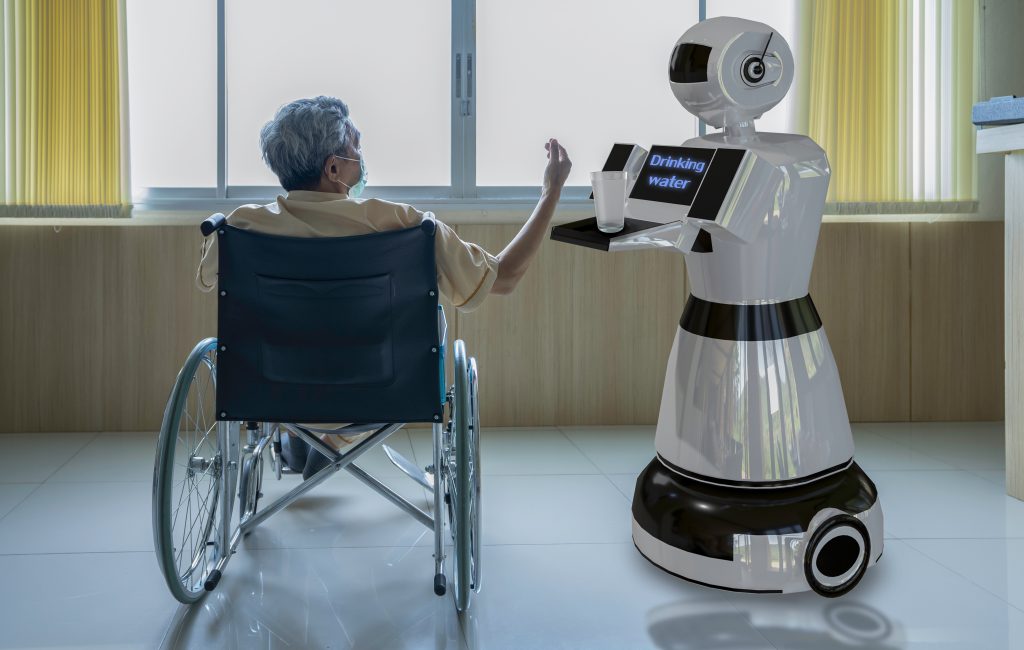It’s no secret that caring for an aging loved one is difficult. Elder care robots are a new technology designed to lessen the load on caregivers by doing some of the more repetitive tasks such as cleaning.
They’re also programmed with elder-specific needs in mind, such as medication reminders, dietary restrictions, and activity management. But not all elder care robots are created equal! Read this guide on how to buy an elder care robot so you can make a wise decision when buying one for your loved one!
Understanding Your Options
First, what is an elder care robot? These robots are medical devices that are designed to provide care and companionship to elderly adults.
There are many kinds of elder care robots, including robot pets, humanoid robots, and smart devices. Each type has different pros and cons depending on your preferences and your loved one’s medical needs.
For instance, robot pets provide a perfect companion for those seniors who are socially isolated and depressed. These companions create social interaction that has been proven to increase moods and even decrease the symptoms of dementia.
Humanoid robots are there to provide more concrete, physical care. This could include assistance with moving your loved one in and out of bed, bathing and showering them or even feeding them. Humanoid robots are still a relatively new technology and will take some time to be widely available to the public at an affordable price.
Smart devices, such as Jibo or even iRobot’s Roomba, are created to provide a better quality of life for seniors. Jibo will give you updates on the weather, set medication and appointment reminders, and even do video calls with your family who cannot visit in person. Automation products like Roomba take care of repetitive chores that may be injury risks to those seniors with mobility limitations.

A Guide to Buying an Elder Care Robot
Follow the tips and advice below in order to get the right elder care robot for you and your loved one’s needs. Remember, you should purchase a robot that assists you in preventing caregiver burnout while keeping a high level of care for your loved one.
Know Your Budget
Before looking for a robot, you should know how much you are willing to spend. These robots can get expensive (up to $10,000 expensive!), so understanding your budget will help you to not overspend and have realistic expectations.
The price of your robot will depend on how advanced it is. For instance, Joy for All robotic pets will only cost you $100, but Sony’s recently-revamped Aibo dog costs $1,800.
There are financing options for certain elder care robots. For instance, Sony offers payment plans that allow you to pay for your Aibo dog in monthly payments of $27. Alternatively, some robots qualify as medical devices, meaning that Medicare will cover the costs in certain situations.
Know Your Needs
The goal of purchasing a caregiving robot is to assist you with caregiving tasks. Thus, you should assess what you need help with and find a robot accordingly. If you need help lifting your loved one in and out of bed, you might opt for Panasonic Corp’s Resyone robotic bed, which transforms into a wheelchair. This option completely removes the risk of you or your loved one being injured during transitions from bed to chair and vice versa.
Alternatively, Cyberdyne’s HAL lumbar exoskeleton gives you an extra boost of strength to reduce injury and increase the ease of transitioning your loved one to different locations.
If you find yourself forgetting to give your loved one medications or have missed a doctor’s appointment here and there, an intelligent robot like ElliQ might be the right fit. ElliQ provides assistance with keeping track of appointments, providing reminders on when to take medications or exercise, and can even tell you the weather or news.
Knowing Your Loved One’s Needs
The robot you choose will greatly depend on your loved one’s needs and preferences. Before buying an elder care robot, assess the major health concerns that your loved one has.
Do they have mobility issues? Are they lonely? Are they depressed? Do they have dementia? Do they need assistance with their activities of daily living?
If they have dementia or they are feeling socially isolated and depressed, a robot with companion capabilities might be the best choice. Companion robots typically come in the form of an animal, but some humanoid robots have companion capabilities as well.
Research has shown that companionship through a robot is effective in decreasing loneliness, depression, and the symptoms of cognitive impairment caused by Alzheimer’s and other forms of dementia.
Read More: How To Overcome Common Family Caregiving Struggles
Ask Their Preference
This is a robot that you are planning to implement into both your and your loved one’s life. It can be easy to neglect their opinion, but to encourage a higher quality of living and happiness, you should ask for their preferences in an elder care robot.
Before buying a robot companion, be sure that you ask if your loved one wants to live life with a battery-powered friend. If they do, ask what kind of robot they are interested in and what they are hoping to get out of this new robotic interaction.
Some robots have customization options. To give your senior more control and a feeling of independence, allow them to customize their robot. This can be the color of the robot or even the accent of the robot’s voice.
The job of a family caregiver is to keep the elderly happy and healthy. To ensure you continue to align with these goals, keep your loved one in mind during your shopping.
Do A Trial Run At A Local Community
Before purchasing a personal elder care robot, contact local senior care communities to see if they offer robotic companion programs. Some communities are beginning to implement robots into their facilities in order to help residents and caregivers alike.
Ask the communities in your area if they have any robot programs and, if they do, see if you would be able to visit with your loved one. This would be a great way to see how your loved one interacts with the robot and if it would be worth the financial investment.
Where to buy an elder care robot
Most elder care robots are only available for institutional use as of right now. Although, some are available to the public through retailers such as Amazon, Walmart, and CVS.
The more advanced, humanoid robots are typically more expensive and are exclusively available to hospitals, nursing homes, and assisted living communities.
However, simpler options, such as robotic pets, are available now at relatively affordable prices. As the industry evolves and caregivers need more and more assistance with the increasing elderly population, the need for robotic and autonomous help will rise. Thus, the availability of these robots will expand more to the public.
Conclusion
Robots are a great way to ensure your loved one is always taken care of. They’re also good for caregivers because they allow them to have more time in their day by doing other tasks like taking care of themselves or spending time outside.
The best thing you can do before buying an elder care robot is to take some time at home and see how it would work with the person you love so much, then go from there!




